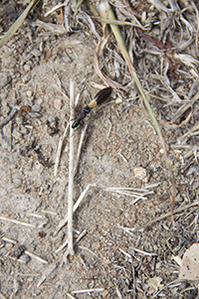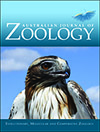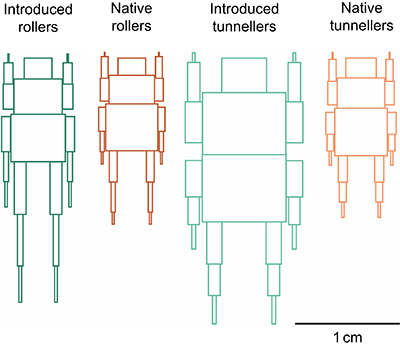Australian Journal of Zoology
Volume 70
Number 4 2022
Some phasmids have evolved a strategy that utilises ants to disperse eggs. We investigated whether there are species-specific interactions between ants and eggs and if variation in ant behaviour towards eggs parallels that towards seeds. We found that some species show different behavioural responses to eggs and seeds, suggesting a species-specific component to dispersal. Photograph by Hannah Smart.
Dung beetles are one of the few examples of a good outcome from introduced species into Australia; they were introduced to mitigate the negative effects of excess dung from cows, horses and sheep. But Australia already had species that tunnel into dung or roll dung of marsupials, and they are both living side by side seemingly without competition. Our study shows that this may be due to subtle differences in their body shape and size between native and introduced species.
The ant Polyrhachis femorata, a first record for South Australia, feigned death individually and in colonies in wooden nest boxes made for pygmy-possums. The ant was most common in unburnt Critically Endangered Narrow-Leaf Mallee Woodland community on Kangaroo Island. Death feigning is likely to deter potential predators and could be studied with nest boxes placed on trees. Photograph by Sophie Petit.








